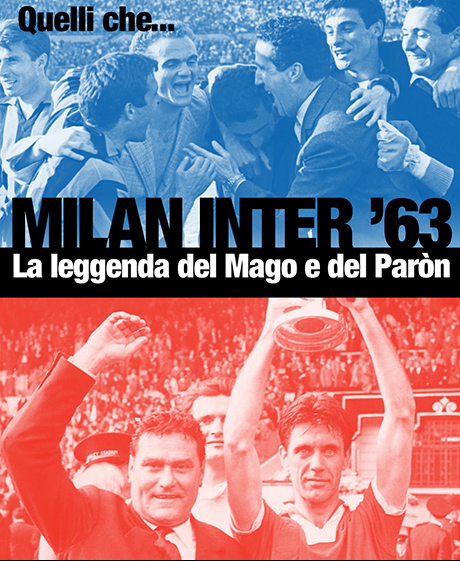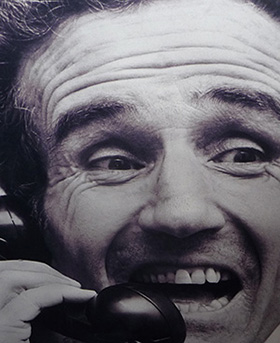
The exhibition QUELLI CHE… MILAN INTER ‘63 LA LEGGENDA DEL MAGO E DEL PARÓN (THE MEN WHO ... MILAN, INTER ’63: THE LEGEND OF THE WIZARD AND THE MASTER) opened in Milan in the Palazzo Reale on 24 May 2013 and ran until 8 September 2013.
The exhibition celebrates the vices and virtues, the rivalry and magic, and the triumphs and defeats of two legendary coaches, the friends and rivals Herrera of FC Inter and Rocco of AC Milan. In the sixties, these two figures turned the football world upside down and proved that you could attain success with completely different techniques, indeed, opposite ones. On the one hand, we have Helenio Herrera, world citizen with no fixed nationality, and on the other Nereo Rocco, who claimed to speak only the dialect of Trieste. Helenio was football’s monk: yoga, yoghourt and silence. Nerio was an aficionado of smoky joints, wine and salami. Different philosophies crowned with the same marvelous success at San Siro, the cathedral of football at home and worldwide.
It is a huge exhibition, covering 400 square metres, curated by the journalist Gigi Garanzini. This is no pedantic museum of archaeology where trophies and photographs are covered in the dust of 50 years’ history. Instead it takes us on a journey that makes us reflect, takes us on an adventure through the Milan of the sixties and the economic boom, where everything you touched turned to gold.
Everything had to be new, never before seen, impossible – from a fork to panettone, from a chair to a skyscraper... to the incomparable and disturbing voice of Maria Callas.
Huge blown-up photos, screens showing quirky images, the smell of camphorated oil, mock dressing-rooms with mock showers where water rains down from above – but that’s just an illusion created by a hyper-real projection. Lockers belonging to players from both sides that, like an advent calendar, spring a surprise on whoever turns the key. Click, Rocco’s tracksuit; click, a small television showing an interview; click, the secret briefcase of paperwork for transferring players; click, the stitched leather Milan ball.
Above the metal lockers are the legendary signs bearing Helenio’s sayings: ‘He who does not give his all gives nothing’ and ‘Think with speed, act with speed, play with speed’.
In the dark rooms for the mega-projections the spectator seats are ingeniously inventive: they are made of piles of Gazzetta dello Sport bound together with string.
Last but not least, the room for the silverware: the cups displayed on opposite walls, the trophies attesting to the legendary victories of Milan and Inter. The Milan of the sixties was the city of the Wizard and the Master, the city of the future and of things still not invented that you invented for yourself – like the fold-up blackboard made of green sheet metal that HH had constructed with his own hands, or the rag ball, a black woollen stocking he had stolen from his mother and held together with string – his first pathetic, rough-and-ready pelota. The money and the sponsors would appear on the horizon much later on.
He who has the will to act succeeds. You lose only when you cease to fight.

